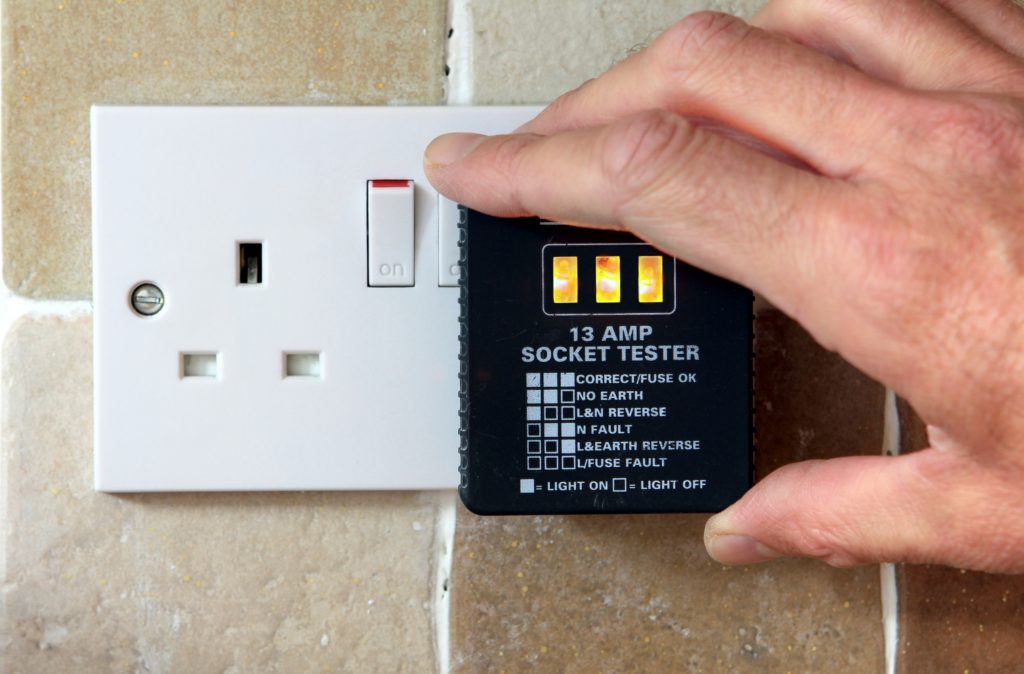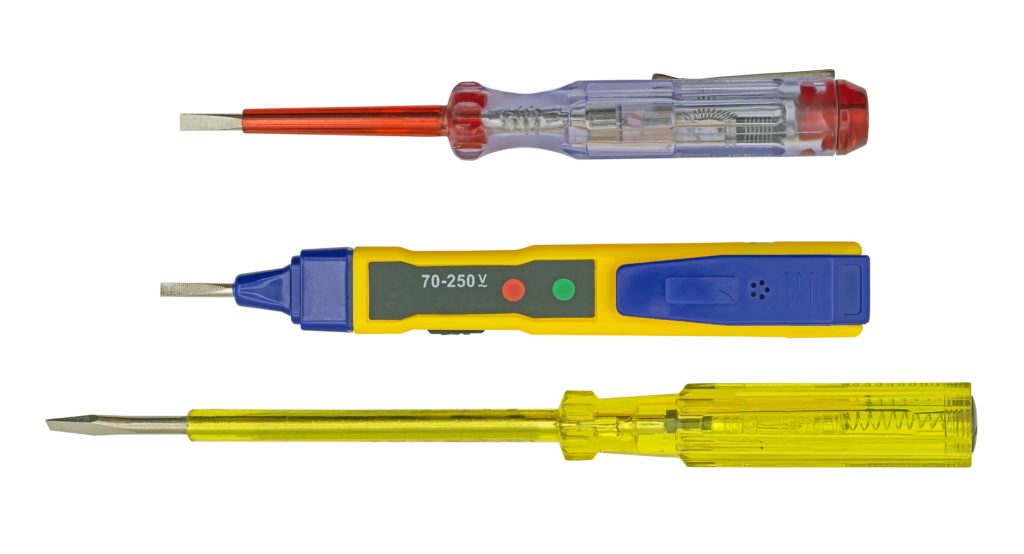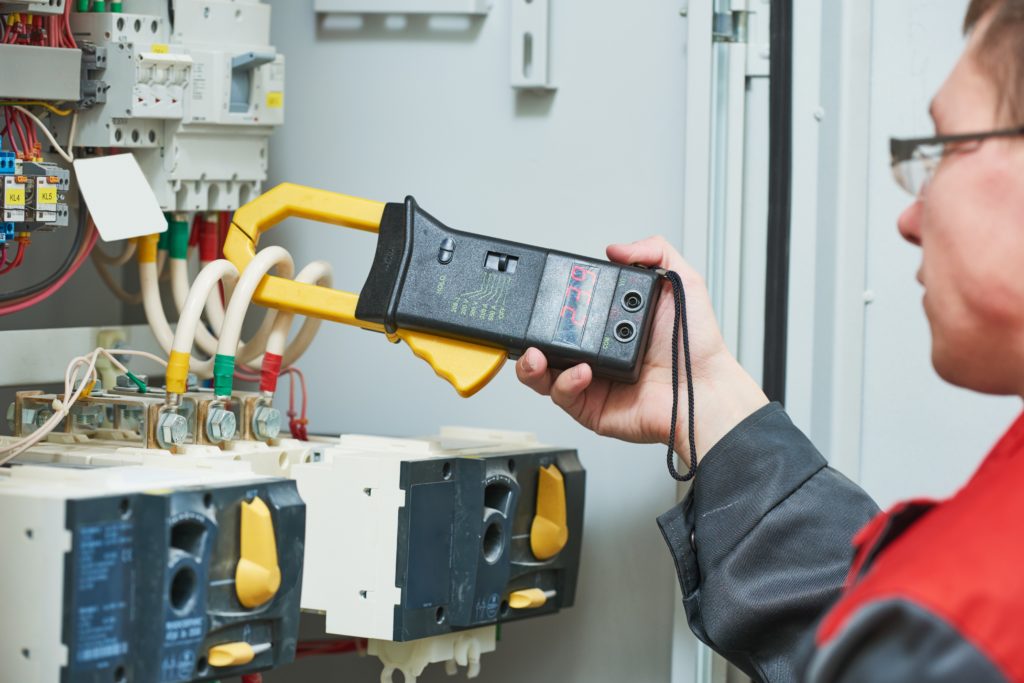7 Types of Electrical Testers & Their Uses
Electricians use various types of electrical supplies to troubleshoot, diagnose and fix issues in circuits and other key components. However, some types of test instruments are better equipped to handle specific jobs. That’s why you’ll see most professional technicians carrying around a couple different testers in their toolbox based on their area of expertise.
Can’t wait to start learning about 7 main types of electrical testers? You don’t have to! Check out our complete guide below.
Outlet Testers

The first type of electrical tester is a device of many names. Outlet, receptacle, plug-in or socket tester can all be used to describe its key function: to ensure an outlet or receptacle is wired correctly! But first, there are two distinctions that you’ll want to know about.
- Analog Receptacle Tester -The first is the digital outlet tester. For the average DIYer and technician, an analog outlet tester should suffice. These typically house three colored lights with a coded system indicating correct wiring, open ground, open neutral, open hot, hot neutral reverse, hot ground reverse or missing ground.
- Digital Receptacle Tester – A digital plug-in tester has all the features of its analog counterpart but with a digital display that reads out socket voltage, leakage voltage and current. Some models will even sport a built-in GFCI test to check if the trip breaker is operational.
Continuity Tester
A continuity tester is used in instances where the integrity of the circuit is in question. If the continuity tester successfully completes the circuit, then it will light up or remain blank if it doesn’t. Because the device tests to see if the electrical pathway is intact and nothing else, continuity testers can only be used when the power is off.
Voltage Testers

Voltage testers, as the name would suggest, detect the presence of voltage. Keep in mind that you shouldn’t rely solely on these tools to determine whether or not a wire is hot because they’re not the most accurate and tend to pick up phantom voltage. For that reason, most electricians use them for wire tracing rather than treat them as safety devices.
Need a more in-depth description? Then check out our article that compares and contrasts voltage testers to multimeters.
- Non-Contact Voltage Tester – You guessed it, non-contact voltage testers mean you do not have to physically touch the tester to the wire. Because no contact is required, these tick tracers prove the safest alternative for detecting voltage.
- Neon Voltage Tester – Neon voltage testers are another type of electrical tester that lights up upon voltage detection. Neon circuit detectors typically have two test leads but can also be found in a “pen” or “wand” style.
- Solenoid Voltage Tester – Solenoid voltage testers are a little fancier than the others because they can also detect polarity, making them ideal for work on receptacles. At a glance, solenoid voltage testers will tell you if outlets or other circuits are wired correctly.
Ammeter
An ammeter is an electrical instrument that measures direct or alternating current (amps). The current can tell you a lot about the health and functionality of your inspected circuit.
For example, if the current is too high, this could indicate a short circuit, ground fault, overload, etc. If the current is too low, this could negatively impact the performance of appliances and other equipment, causing overheating and even machine failure.
Ohmmeter
Electricians use ohmmeters to measure resistance and to detect if an electrical circuit or a component is broken. For example, a reading resulting in a high resistance could mean a loose connection, and too low a resistance could reveal damaged insulation.
- Insulation Testers – An insulation tester, sometimes incorrectly referred to as a megohmmeter, is a type of electrical tester that measures the resistance in insulation by sending a high-voltage signal to detect any leakage.
- Earth Resistance Testers – These testers ensure resistance is 25 ohms to ground or less in a single electrode connection. Because ground systems can be improperly installed or ground resistance can change over time, these systems need to be checked periodically. Doing so verifies that electricity has a safe place to go in case of lightning strikes, overloads, etc.
Multimeter

A voltmeter, ammeter, ohmmeter and sometimes continuity can be combined into one electrical tester. These are known as multimeters and are the most versatile test meters.
Or course, it would be too easy if we could call it a day after reading about just one. There are four types of multimeters, each with its own set of specializations that make one preferable over the other in specific use cases.
- Digital – Digital multimeters (DMMs) are more accurate than their analog predecessors and display a digital readout. Today, they come with advanced measurement features, such as true RMS, capacitance, frequency, temperature and humidity.
- Auto-Ranging – Some digital multimeters also come with an auto-ranging feature, meaning they can automatically detect and switch between preset ranges within the voltage, current and resistance settings.
- Clamp – Another type of multimeter is the clamp meter which bears a characteristic jaw-shaped appendage that can detect an electromagnetic field even through insulation.
- Analog – Before there were digital multimeters, there was analog or VOM for short. Although somewhat outdated, they still have a unique advantage: they don’t require batteries while taking voltage or current measurements.

Circuit Breaker Finders
The last type of electrical tester is used to expose which circuit breaker the outlet or light fixture is connected to in a service panel. Circuit breaker finders come in two parts: a transmitter and a receiver. You plug the transmitter into the outlet and then run the receiver over the service panel until it lights up over the corresponding circuit breaker.
